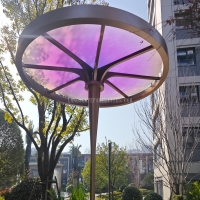Welcome to the website for landscape facilities products and knowledge.
How does the trash can’s surface finish resist graffiti and vandalism?
Graffiti and vandalism are persistent challenges for urban furniture, including public trash cans. To address this, manufacturers have developed advanced surface finishes that resist spray paint, markers, and scratches. These finishes often incorporate anti-graffiti coatings, which create a smooth, non-porous barrier. When graffiti is applied, it can be easily wiped off without damaging the underlying material.
Common techniques include powder-coated finishes, epoxy resins, and hydrophobic coatings. Powder coating provides a tough, layered defense, while epoxy resins offer chemical resistance. Hydrophobic coatings repel liquids, making it harder for paint to adhere. Some trash cans also use textured or patterned surfaces that discourage tagging by making graffiti less visible.
Stainless steel and reinforced polymers are popular materials due to their durability and ease of cleaning. Additionally, some cities opt for dark-colored or matte finishes, as they show less graffiti and blend into urban environments.
By investing in vandal-resistant designs, municipalities reduce maintenance costs and keep public spaces clean. These innovations ensure trash cans remain functional and aesthetically pleasing, even in high-vandalism areas.
Related search:

Recommendation
Metal frame with gradient color acrylic combined with high-end shading landscape facilities